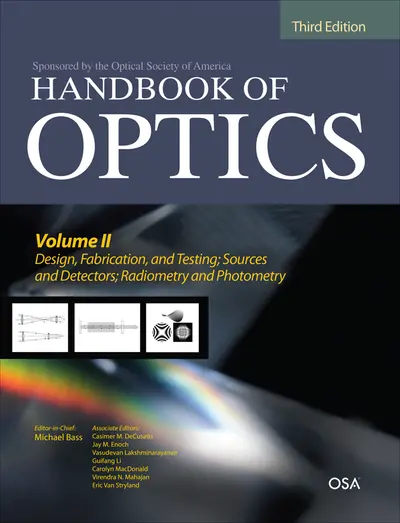My Account Details

ISBN10: 0071498907 | ISBN13: 9780071498906

Step 1 . Download Adobe Digital Editions to your PC or Mac desktop/laptop.
Step 2. Register and authorize your Adobe ID (optional). To access your eBook on multiple devices, first create an Adobe ID at account.adobe.com. Then, open Adobe Digital Editions, go to the Help menu, and select "Authorize Computer" to link your Adobe ID.
Step 3. Open Your eBook. Use Adobe Digital Editions to open the file. If the eBook doesn’t open, contact customer service for assistance.
Publisher's Note: Products purchased from Third Party sellers are not guaranteed by the publisher for quality, authenticity, or access to any online entitlements included with the product. The most comprehensive and up-to-date optics resource available Prepared under the auspices of the Optical Society of America, the five carefully architected and cross-referenced volumes of the Handbook of Optics, Third Edition, contain everything a student, scientist, or engineer requires to actively work in the field. From the design of complex optical systems to world-class research and development methods, this definitive publication provides unparalleled access to the fundamentals of the discipline and its greatest minds. Individual chapters are written by the world's most renowned experts who explain, illustrate, and solve the entire field of optics. Each volume contains a complete chapter listing for the entire Handbook, extensive chapter glossaries, and a wealth of references. This pioneering work offers unprecedented coverage of optics data, techniques, and applications. Volume II covers design, fabrications, testing, sources, detectors, radiometry, and photometry.
Need support? We're here to help - Get real-world support and resources every step of the way.